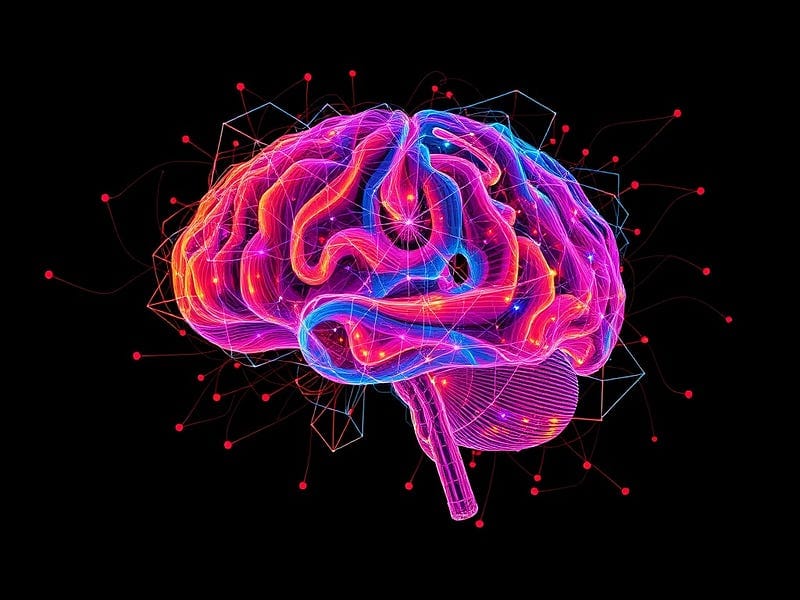The Death of Objectivity: How American Critical Realism Challenges Journalism’s Naive Realism
American Critical Realism in News as it Relates to Politics

American Critical Realism in News as it Relates to Politics
In American politics, the role of the news media has never been more critical nor more contested. Many Americans approach the news assuming it provides direct, unfiltered access to the truth as it pertains to the cultural, the social, and the political — echoing Walter Cronkite’s famous sign-off, “And that’s the way it is.”
Yet, as American Critical Realism reminds us, the media does not serve as a transparent window to reality but as a lens shaped by political institutional biases, cultural norms, and interpretative social frameworks.
Cronkite’s phrase symbolized an era of trust in the media’s objectivity, but today, it prompts reflection on how mediated and subjective the presentation of truth has always been.
The historical context of Fox News’ creation lies in its deliberate effort to counter what its founders and many conservative critics perceived as a liberal bias in the mainstream media. In the mid-to-late 20th century, outlets like CBS, NBC, and ABC dominated American news, with figures like Walter Cronkite representing an era of trusted journalism often viewed as adhering to a centrist, objective standard. However, many conservatives felt these outlets subtly (or overtly) reflected liberal perspectives on issues like civil rights, government regulation, and social policy, creating what they saw as an imbalance in public discourse.

When Rupert Murdoch and Roger Ailes launched Fox News in 1996, it was explicitly designed to challenge these mainstream liberal narratives by appealing to a conservative audience. Its tagline, “Fair and Balanced,” and later, “We Report, You Decide,” invoked a Cronkite-like ethos of delivering unfiltered reality. However, Fox News simultaneously embraced a perspective-driven model, openly aligning itself with conservative values and framing its reporting through a lens that emphasized issues and viewpoints often overlooked or marginalized by mainstream outlets.
Fox News capitalized on the Cronkite-era assumption of naive realism — the belief that news reflects reality without bias — while selectively applying it to its audience’s worldview. This strategy redefined the media landscape, fueling polarization by encouraging viewers to see its interpretation as direct access to truth while dismissing opposing viewpoints as inherently biased. This marked a pivotal shift in American news, where objectivity became a contested ideal and contributed to the fragmented, partisan media environment we see today.
Critical realism, when applied to news and politics, challenges the idea of naive realism — the belief that news presents an unfiltered truth — by showing it is deeply flawed.
Reality exists independently of perception, but our access to it is mediated by cognitive and institutional frameworks. By applying the principles of critical realism to the analysis of news and politics, we gain a deeper understanding of how media shapes public perception, influences political polarization, and frames democratic discourse.
The Role of Critical Realism in News Media
Critical realism in news posits that while reality exists independently of human thought, our understanding of “the political” is shaped by interpretative processes. This means the media does not act as a transparent window to reality but as a lens influenced by institutional biases, economic incentives, cultural norms, journalistic practices, and our own intuitive notions about “what is best” for America.
In this way, headlines, narratives, and the choice of which stories to report and those we choose to consume are all shaped by these mediating factors, further challenging the idea of objectivity in journalism.
In the political context, critical realism reveals that producing news is not a straightforward reflection of reality but is mediated by interpretative processes. Institutional biases, economic pressures, cultural norms, and journalistic practices influence news stories' selection, framing, and presentation.
As a result, the notion of journalistic objectivity in news as it relates to politics becomes untenable, as every aspect of news production involves subjective decisions and interpretative frameworks. This challenges the traditional view of journalism as an entirely neutral conveyor of facts and calls for greater transparency about the factors shaping media narratives.
For instance, consider the framing of a policy debate such as healthcare reform. A progressive media outlet may highlight personal stories of individuals benefiting from expanded access to care, while a conservative outlet might focus on the financial costs or potential inefficiencies. Both perspectives engage with the same underlying reality but present it through distinct interpretative frameworks, influencing how audiences perceive the issues.
Cognitive Frameworks and Political Polarization
In addition to institutional biases, individual cognitive frameworks play a significant role in shaping how news is interpreted. These frameworks, informed by prior beliefs, cultural values, and partisan affiliations, act as filters through which news is processed. As a result, the same story can evoke dramatically different interpretations among individuals with opposing political views.
For example, a news report on immigration policy might be seen as a story of human rights and compassion by one audience and as a narrative about national security and economic burden by another. This divergence illustrates the critical realist insight that our understanding of reality is always mediated, not direct. Recognizing this helps explain why political debates often remain unresolved even when participants are presented with the same set of facts.
The Illusion of Direct Access and the Spread of Misinformation
The assumption of naive realism also contributes to the proliferation of misinformation. When individuals believe their preferred news source offers an unmediated, objective view of reality, they are more likely to dismiss conflicting evidence as “fake news” rather than critically evaluating it. This dynamic exacerbates the spread of falsehoods and deepens ideological divides.
Critical realism in the news, as it relates to politics, offers an antidote to this problem by fostering epistemological humility. It encourages individuals to recognize that all news is mediated and to assess the sources and narratives they encounter critically. By adopting this perspective, citizens can better navigate the complexities of political discourse and resist the allure of simplistic or manipulative narratives.
Political Narratives and Agenda-Setting
Critical realism in the news as it relates to politics also sheds light on how political actors and interest groups leverage the media’s mediating role to shape public perception. Through agenda-setting and narrative construction, these actors influence which issues receive attention and how they are framed. This process often involves selective emphasis on certain aspects of reality while downplaying others, shaping the public’s understanding of complex issues.
Take, for instance, the discourse around climate change. A media outlet aligned with environmental advocacy may focus on the urgency of scientific warnings and the moral imperative for action, while an outlet with ties to industry interests might emphasize economic costs and uncertainties in climate models. Both narratives engage with elements of reality but construct divergent interpretations, illustrating the mediated nature of public discourse.
Implications for Democratic Discourse
In a politically polarized environment, naive realism in the news as it relates to politics reinforces echo chambers and tribalism by encouraging individuals to view their preferred news sources as unerringly accurate.
This undermines the possibility of constructive dialogue across ideological divides. Critical realism, by contrast, offers a framework for fostering more reflective and inclusive discourse. Acknowledging the mediated nature of all perspectives and discarding the naive realism of the objectivity burden encourages journalists to approach political debates with greater openness and a willingness to engage with opposing viewpoints — what the world needs now is more interpretation and understanding and less explanation and prediction — these approaches are on opposite ends of the spectrum.
Explanation and prediction, while valuable in certain contexts, often reduce complex realities to simplified cause-and-effect relationships, aiming to forecast outcomes without fully grappling with the intricacies of human experience or societal dynamics. Interpretation and understanding, by contrast, emphasize the nuanced, contextual, and mediated nature of reality, fostering deeper engagement with the factors that shape events and perspectives.
In an era dominated by polarized narratives and surface-level analysis, a shift toward interpretation encourages empathy, critical thinking, and a more holistic grasp of the interconnected forces at play, making it a crucial step toward addressing the multifaceted challenges of our time.
Conclusion
Applying the principles of critical realism to news as it relates to American politics reveals the profound influence of mediation on public perception and political discourse. It challenges the simplistic notion of “objective truth” in media, highlighting the interpretative processes that shape our understanding of reality.
By fostering critical thinking and epistemological humility, critical realism in the news as it relates to politics equips us with valuable tools to navigate the complexities of modern political life. In an era of misinformation, polarization, and rapid societal shifts, this perspective becomes vital for cultivating an informed and engaged citizenry. As we enter a time of profound transformation, embracing this approach can help sustain a resilient and vibrant American democratic civil society, prepared to adapt to the challenges and opportunities ahead.



